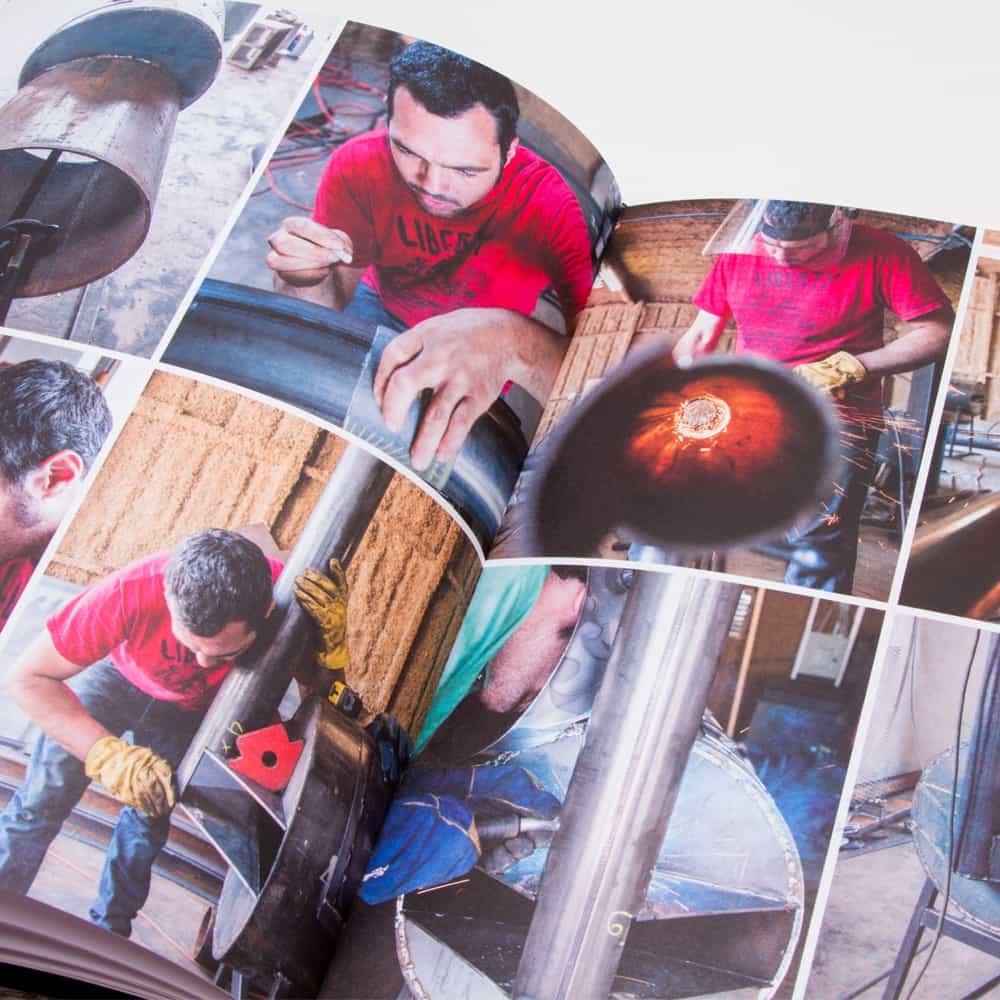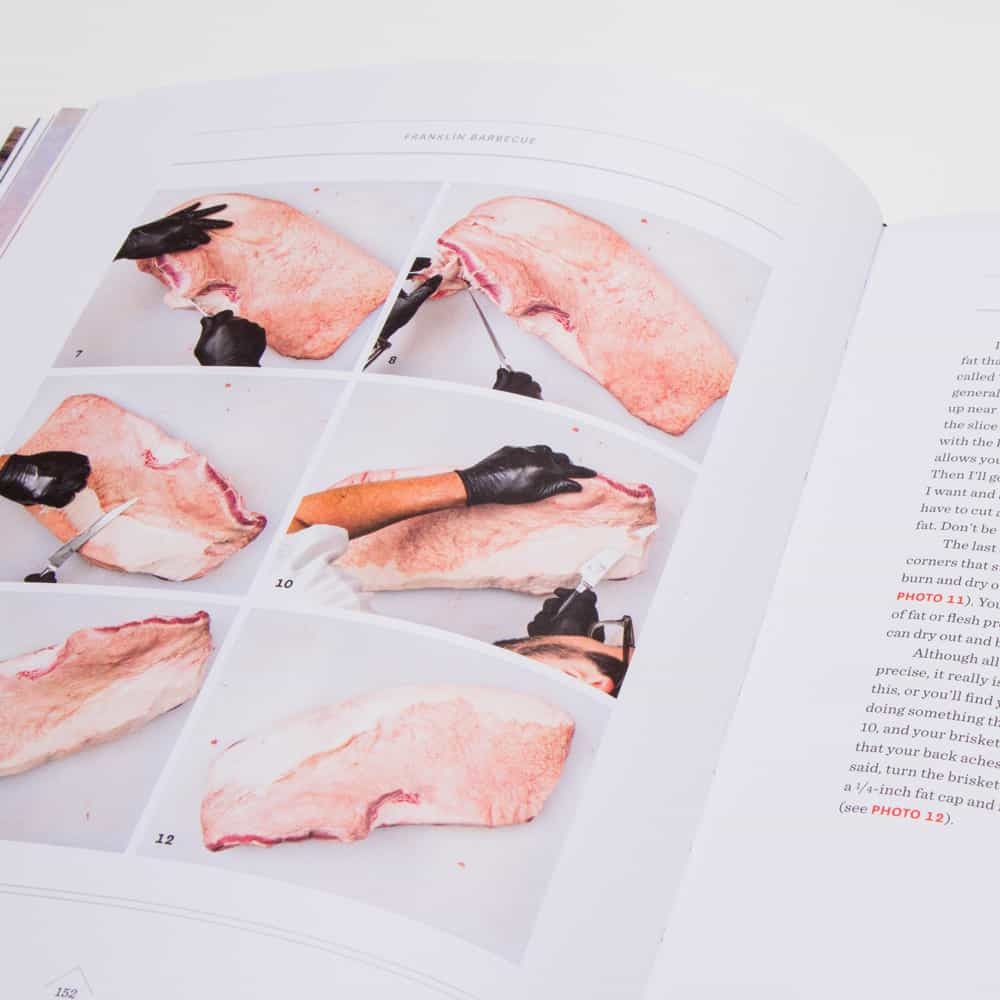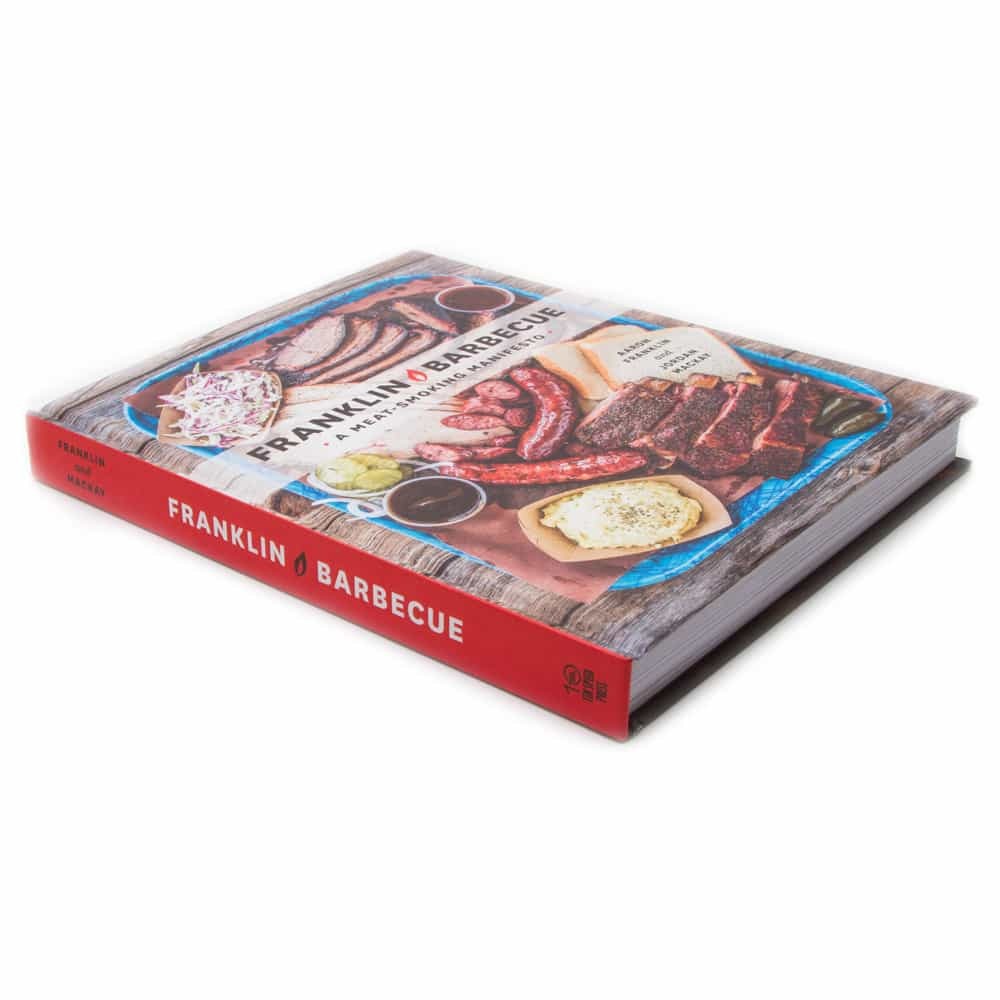Book Review: Franklin Barbecue, A Meat-Smoking Manifesto
We all have our favorite BBQ joints. Maybe your number one is a walk-up shrine of the local BBQ style—a road-side shack in the backwoods in the next county over. Maybe it’s something in another state that you tried once and you’ve made a pilgrimage to ever since (or, best of all, maybe it’s your own backyard where you’ve mastered the art of getting the ribs to come out just the way you like them every single time).
For many, many people scattered across the whole country, however, a little shop called Franklin Barbecue in Austin, Texas, tops their list. If you go to Austin, it’s not hard to find—just ask around and then look for the place with the line that runs down the block every morning just before 11 am (closed Mondays).
When it comes to the stars in the BBQ firmament, Aaron Franklin is one of the shiniest. His brisket is legendary. Not only do people line up to eat his ‘Q, they also line up to hear him speak and to take his classes. He takes his craft very, very seriously. Heck, he even has his own MasterClass.
But if you aren’t in Austin (or a subscriber to MasterClass), or if you just want to learn more from the hand of this celebrated pitmaster, I have a suggestion for you. Get yourself a copy of his book, Franklin Barbecue: A Meat-Smoking Manifesto.
Unlike some cookbooks that are just collections of recipes, or others that really are just photographic forays into someone’s kitchen, this title from Aaron Franklin is delightfully focused on teaching and methodology. Page by page, Franklin teaches you how he does BBQ.
The early sections of the book cover such basics as fire control, learning to recognize different kinds of smoke, selecting and trimming different cuts of meat, and other aspects of the meat-smoking life in such detail that other BBQ cookbooks (other very good books, mind you) can simply gloss over.
Franklin even has a section on building your own smoker from scratch. He goes on for a bit about his preferred type of welder for putting all the pieces together in a way that will last. It’s not just his expertise but his generosity of spirit that shines through.

Of course, there’s a historical section on his rise from a BBQ newbie to a master of the craft, the owner of one of the country’s most successful and celebrated restaurants. That account is fun, and will surely stoke the fever-dreams of many would-be BBQ restaurateurs.
The longest section of the book, however, is chapter six, entitled simply, “The Cook.” It really is, if you’ll pardon the expression, the meat of the book and it’s crammed with useful information and step-by-step photographs.
At long last,” he writes, “it’s finally time to get cooking. You’ve gotten to know your smoker and you’ve sourced or seasoned the best wood you can possibly find. You’ve considered building and tending a fire[…] Now it’s time to put all of this information to use.”
If everything up to this point in the book is somewhat theoretical (discussions of the strengths and weaknesses of different smokers and woods and dry aging vs. wet aging), here, Franklin’s writing becomes purely practical.
He gives instructions for building your own rub, for slathering, for wrapping, for temping and gauging doneness. He also provides advice for cooking in different weather and handling the stall (including a temperature graph that data-nerds like myself will eat up), and then goes into step-by-step detail on the right approach to prepping and cooking the different meats in the BBQ pantheon—brisket, spare ribs, beef ribs, and turkey breast each get their own section. (There is the somewhat curious omission of pork butt, which can be granted since Franklin’s BBQ is firmly rooted in the illustrious Texas beef BBQ tradition. He also does lay out “The basic steps for smoking meat—any meat” earlier in the chapter, and the principles laid out there do apply to pork shoulder cooks.)
I found the description of how to trim a brisket particularly well done—especially the many color photographs including, most importantly, what a properly trimmed brisket should look like after all the trimming is done. The photographs really do the work here, as it can be hard for a beginner or even a relatively seasoned weekend warrior to know what to trim and what not to trim. But they don’t stand on their own. Unlike some food books where the illustrations are ornamental, Frankin and his editors have worked hard to incorporate the photo illustrations directly into the written instructions to tell you why he’s doing what he does at each step of the way. For example…
The last step is to round off the edges because corners that stick out might have a tendency to burn and ry out before the rest of the meat (see Photo 11). You want to remove any little pieces of fat or flesh protruding from the mass, as they can dry out and burn…”

The last section of the book, “Serving and Eating,” brings real thought to how to store, prepare, and serve BBQ in ways that let the smoky meat really shine, including recipes for sauces and suggestions for beverage pairings.
Ultimately, Franklin Barbecue: A Meat Smoking Manifesto is a great place to start for the beginner looking to get into the craft because of its breadth and its unassuming attention to detail. Beyond that, it will also definitely serve the well-seasoned practitioners looking to hone their skills and pick up a few practical tips here and there. What’s more, it’s just fun to read!
Shop now for products used in this post:


